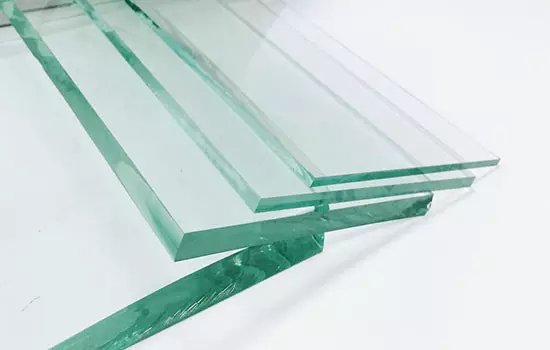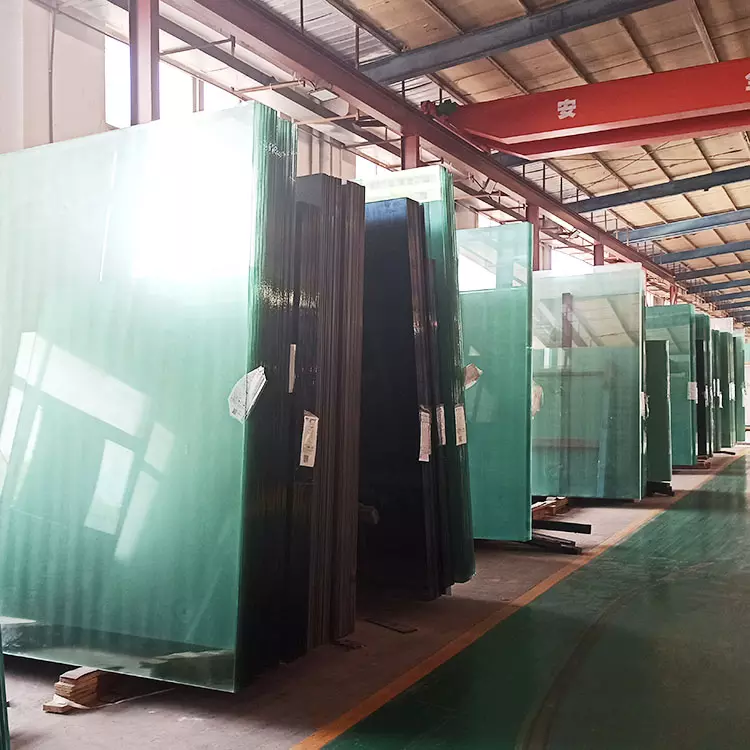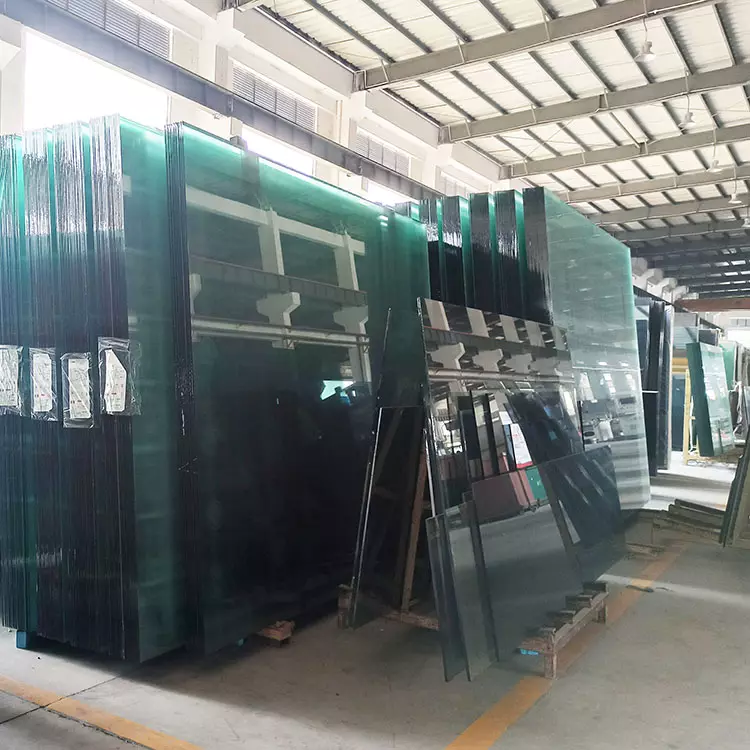Difficulties in the forming control of ultra-thick plates mainly include the accumulation capacity of glass liquid, the control of thickness difference, and the control of plate shape stability.
The difficulties in annealing control mainly include fried plates, cracked edges, online cutting problems, and customer complaints about cutting.
The above-mentioned problems have seriously affected the physical quality and finished product quality of float glass, resulting in a decrease in float glass production and total yield, and an increase in quality cost, which not only affects corporate profits, but also poses a threat to corporate reputation.
Effective solutions and stable control of the above problems are particularly important for the production of ultra-thick plates. In this paper, on the basis of elaborating the theory of thick plate forming and annealing, combined with years of actual production experience, a solution to the corresponding problem is proposed.

Ultra-thick plate forming control
(1) Thickness difference control
The thickness difference is adjusted mainly by controlling the forming temperature of the runner temperature and the water bag in the high temperature area; the positioning of the edge pulling machine and the distance setting of other edge pulling machines are also important hardware conditions that determine the quality of the thickness difference; the speed and angle of the edge pulling machine Matching plays a very important auxiliary role in adjusting the thickness difference. The amount of drawing and the width of the net plate are also important factors affecting the difference in thickness. In general, the greater the amount of drawing and the wider the width of the finished plate, the more difficult it is to control the difference in thickness.
(2) Control of plate shape in tin bath
Control the deviation of the edge pulling locomotive, keep the plate shape as centered as possible, and keep the pressing depth basically the same, so as to avoid plate shape deviation due to uneven force or large temperature field difference. The depth of tin liquid and the matching of deep and shallow pools, the layout of the tin bath barrier, the use of linear motors, etc. can adjust the flow direction of tin liquid, which are the hardware conditions that determine whether the shape of the tin bath is stable. The matching of the parameters of the edge pulling machine, the fluctuation of the pulling amount, and the size of the smooth edge also have a great influence on the stability of the plate shape in the tin bath of the ultra-thick plate. Therefore, it is necessary to have more reasonable and mature parameters of the edge pulling machine to maintain The amount of pull is stable and the size of the smooth edge is reasonable.
(3) Accumulation capacity of glass liquid in tin bath
The accumulation capacity of the glass liquid in the tin bath is an important factor affecting the production of ultra-thick plates. The factors affecting the thickness of the glass liquid pile in the tin bath mainly include the amount of drawing, the temperature of the runner forming, the layout and quantity of the edge pulling machine, the setting of the edge pulling machine parameters, etc. When producing ultra-thick plates, it is generally considered to reduce the amount of drawing properly to reduce the forming accumulation pressure; the number of edge pulling machines used is more than that of conventional thickness, and the angle and speed of edge pulling machines are also larger than those of conventional thickness production. Improve the accumulation capacity of molten glass in the tin bath.

Annealing control for ultra-thick plates
(1) fried board
Frying boards are mainly divided into two categories: horizontal frying and vertical frying. The reason for the horizontal explosion: the edge of the glass plate has a large compressive stress. Treatment measures: increase the air valve at the edge of the open area, reduce the temperature at the edge of the open area (or reduce the opening of the air valve in the middle of the open area); cause of vertical explosion: the glass plate is too tight. Treatment measures: increase the air valve in the middle of the open area, reduce the temperature at the explosion port (or reduce the opening of the air valve at the edge of the open area).
(2) Cracked edge of the glass plate
The cracked edge is mainly caused by three situations: ①The edge fire is unreasonable, and the shape of the plate changes and the edge fire is not tracked in time; ②The edge of the open area cools too fast and causes the cracked edge; ③Ambient temperature changes, which may be due to the cooling of the edge at night Quickly cause cracks. Preventive measures: In the tin bath, try to ensure the stability of the glass plate, control the width and shape of the plate, and minimize the fluctuation of the pulling amount; when the two side guns at the exit of the tin bath burn, the flames should be dense and strong enough to prevent the burning of the glass plate. It is necessary to ensure that the flame can cover the entire light edge; the edge fire of the annealing kiln must be kept at a suitable height, the natural gas is fully burned, and excess cold air cannot be blown onto the glass plate. Windshields can be used at the edge of the open area to prevent the temperature of the light edge from dropping too quickly and reduce the temperature difference with the middle area of the glass plate, thereby reducing edge cracking caused by too low edge temperature.
(3) Online cutting problems and solutions
When breaking horizontally, the end surface of the glass side is irregular, mainly due to the high temperature and high compressive stress on the glass side during transverse cutting. Adjustment: Increase the blowing volume on one side of the F area (the irregular side) or reduce the blowing volume on the other side and the middle of the F area; the central cutting section is not neat. Adjustment: increase the blowing volume in the middle of F area or decrease the blowing volume at the edge of F area; when breaking transversely, it will not split along the knife mark. Adjustment: increase the blowing volume on the upper surface of F area or decrease the air blowing volume on the lower surface of F area; before the longitudinal breaking, the knife mark will crack automatically, and the tensile stress on the upper surface is too large at this time. Adjustment: increase the blowing volume on the lower surface of F area or decrease the air blowing volume on the upper surface of F area.

Control methods commonly used in production
(1) Reduce the pull amount
In order to solve the pressure of forming and annealing, the amount of drawing is properly reduced when producing ultra-thick plates, which helps to relieve the stacking pressure of the edge pulling machine.
(2) Strengthen the heat preservation of the annealing kiln
Strengthen the heat preservation of the annealing kiln, seal the heat preservation at the shaft head of the annealing kiln, seal the observation hole, seal the electric heater, and seal the top welding seam. Good heat preservation of the annealing kiln is the premise to ensure the implementation of the annealing system, and it is also the basis for stable annealing.
(3) Replace the annealing kiln butterfly valve positioner with accurate positioning
If the positioning of the butterfly valve is not accurate, the valve position will often drift, which will affect the stability of the overall annealing process system. The stability of equipment is the premise of process stability. Without stable and controlled equipment, it is impossible to have a stable process. By gradually replacing it with a high-quality butterfly valve positioner, the valve position stability and control accuracy are significantly improved.
(4) The valve position and temperature system in the front area of the curing annealing kiln
How to match the opening of the upper and lower air valves is extremely important. To ensure the cutting quality without frying the board, it is necessary to control the equipment status and process and conduct long-term comprehensive research to stabilize it.
Optimize performance
The quality of online cutting is good, and the number of frying boards has decreased sharply. The impact on the yield of 15 mm and 19 mm ultra-thick glass due to frying boards is less than 0.15%, and customer complaints about cutting quality are almost zero.
